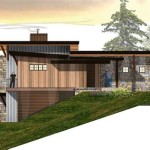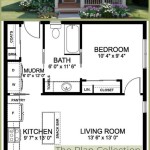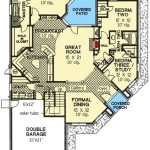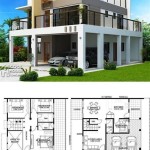Colonial Revival house plans are architectural designs inspired by the traditional building styles of the American Colonial period, which spanned from the 17th to 18th centuries. These plans evoke the charm and elegance of that era, incorporating characteristic features such as symmetrical facades, classic columns, and dormer windows. One notable example is the Williamsburg Colonial style, known for its red brick exterior, white trim, and spacious interiors.
The popularity of Colonial Revival house plans has fluctuated over the years, experiencing a surge in the early 20th century as Americans sought to reconnect with their heritage. Today, these plans continue to resonate with homeowners who appreciate their timeless beauty and historical significance. By incorporating elements of the past into modern construction, Colonial Revival house plans offer a blend of nostalgia and contemporary comfort.
In the following sections, we will explore the key elements of Colonial Revival house plans, discuss their historical context, and provide practical advice for incorporating these designs into new home construction.
Colonial Revival house plans are characterized by several key elements that distinguish them from other architectural styles. Here are 10 important points to consider:
- Symmetrical facade
- Classic columns
- Dormer windows
- Red brick exterior
- White trim
- Spacious interiors
- Gable roofs
- Bay windows
- Fireplaces
- Arched doorways
These elements combine to create a sense of timeless beauty and historical charm, making Colonial Revival house plans a popular choice for homeowners seeking a classic and sophisticated style.
Symmetrical facade
A symmetrical facade is one of the most defining characteristics of a Colonial Revival house plan. It refers to the balanced and orderly arrangement of architectural elements on the front of the house, creating a sense of harmony and visual appeal.
In Colonial Revival house plans, the facade is typically divided into three sections: a central block flanked by two wings. The central block often features a grand entrance with a portico or columns, while the wings may contain windows, doors, or other decorative elements.
The symmetrical facade of a Colonial Revival house plan not only enhances its aesthetic appeal but also reflects the architectural principles of the Colonial era. During that time, symmetry was considered a symbol of order, balance, and proportion, which were highly valued in both architecture and society.
By incorporating a symmetrical facade into their house plans, Colonial Revival architects sought to evoke a sense of nostalgia and connection to the past while also creating homes that were both beautiful and functional.
Overall, the symmetrical facade is an essential element of Colonial Revival house plans, contributing to their timeless appeal and historical significance.
Classic columns
Classic columns are another iconic feature of Colonial Revival house plans. They are typically used to support the portico or porch, and can also be found flanking the front door or windows. Columns in Colonial Revival architecture are often inspired by the classical orders of ancient Greece and Rome, such as the Doric, Ionic, and Corinthian orders.
Doric columns are characterized by their simple, unadorned shafts and capitals. Ionic columns have more elaborate capitals with volutes (scroll-like designs), while Corinthian columns have even more ornate capitals with acanthus leaves and other decorative elements.
The choice of column order for a Colonial Revival house plan depends on the desired level of formality and grandeur. Doric columns are more suited to simpler, more rustic designs, while Ionic and Corinthian columns are more appropriate for more elaborate, formal homes.
In addition to their aesthetic appeal, columns also serve a structural purpose. They help to support the weight of the roof and upper floors, and can also be used to create a sense of grandeur and monumentality.
Overall, classic columns are an essential element of Colonial Revival house plans, contributing to their timeless beauty, historical significance, and structural integrity.
Dormer windows
Dormer windows are another characteristic feature of Colonial Revival house plans. They are vertical windows that project from the roof, creating additional headroom and natural light in the attic or upper floors.
- Increased natural light: Dormer windows allow more natural light to enter the attic or upper floors, making these spaces brighter and more inviting.
- Improved ventilation: Dormer windows can be opened to provide ventilation, helping to keep the attic or upper floors cool and comfortable.
- Increased headroom: Dormer windows create more headroom in the attic or upper floors, making these spaces more usable and functional.
- Architectural interest: Dormer windows add visual interest to the roofline, breaking up the monotony of a plain roof and creating a more dynamic and visually appealing exterior.
Overall, dormer windows are a functional and aesthetically pleasing addition to Colonial Revival house plans, providing additional light, ventilation, headroom, and architectural interest.
Red brick exterior
Red brick is a classic exterior material for Colonial Revival house plans, evoking the historic charm and elegance of the Colonial era.
- Durability and longevity: Red brick is an extremely durable and long-lasting material, making it an excellent choice for exterior construction. It is resistant to weathering, fire, and pests, ensuring that your home will stand the test of time.
- Low maintenance: Red brick exteriors require very little maintenance. Unlike wood or vinyl siding, brick does not need to be painted or stained, and it is easy to clean with just soap and water.
- Aesthetic appeal: Red brick has a timeless aesthetic appeal that complements a variety of architectural styles. It can be used to create both formal and informal exteriors, and it pairs well with other materials such as white trim, black shutters, and stone.
- Historical authenticity: Red brick was a common building material in the Colonial era, and using it on your home can help to create a sense of historical authenticity and connection to the past.
Overall, a red brick exterior is a durable, low-maintenance, and aesthetically pleasing choice for Colonial Revival house plans, offering both historical authenticity and timeless beauty.
White trim
White trim is another essential element of Colonial Revival house plans, providing a crisp and contrasting accent to the red brick exterior. It is typically used to highlight architectural features such as windows, doors, cornices, and columns.
The use of white trim in Colonial Revival architecture is inspired by the Georgian architectural style, which was popular in England during the 18th century. Georgian architecture is characterized by its symmetrical facades, red brick exteriors, and white trim. Colonial Revival architects borrowed these elements and adapted them to the American context, creating a unique style that is both historically authentic and visually appealing.
White trim serves both a functional and aesthetic purpose in Colonial Revival house plans. Functionally, it helps to protect the edges of windows, doors, and other architectural features from weathering and decay. Aesthetically, it creates a sense of contrast and visual interest, highlighting the architectural details of the home and giving it a more finished and polished look.
Overall, white trim is an essential element of Colonial Revival house plans, contributing to their historical authenticity, visual appeal, and durability.
In addition to the functional and aesthetic benefits mentioned above, white trim also helps to create a sense of unity and cohesion in Colonial Revival house plans. By using white trim to highlight architectural features throughout the exterior of the home, architects can create a visually harmonious and balanced design that is both pleasing to the eye and historically accurate.
Spacious interiors
Colonial Revival house plans are known for their spacious interiors, which offer a sense of grandeur and comfort. This spaciousness is achieved through a combination of design elements, including:
- High ceilings: Colonial Revival homes typically have high ceilings, which create a sense of volume and airiness. This is especially important in formal rooms such as the living room and dining room, where high ceilings can make the space feel more grand and impressive.
- Large windows: Colonial Revival homes also feature large windows, which allow for plenty of natural light and provide views of the surrounding landscape. This helps to create a bright and inviting atmosphere, and it also makes the rooms feel more spacious.
- Open floor plans: Many Colonial Revival homes have open floor plans, which allow for a more fluid and spacious flow of traffic. This is especially common in the public areas of the home, such as the living room, dining room, and kitchen.
- Multiple rooms: Colonial Revival homes typically have multiple rooms, which allows for a variety of uses and activities. This is in contrast to more modern homes, which often have fewer rooms but larger, more open spaces.
Overall, the spacious interiors of Colonial Revival house plans offer a sense of grandeur, comfort, and flexibility. This makes them ideal for families who need plenty of space to live, work, and entertain.
Gable roofs
Gable roofs are a common feature of Colonial Revival house plans, and they play an important role in creating the overall look and feel of the home. A gable roof is a two-sided roof with a triangular shape at each end. The two sides of the roof slope down from a central ridge line, and they meet at a peak at the top of the roof.
- Historical authenticity: Gable roofs were a common feature of homes in the Colonial era, and using them on a Colonial Revival house plan helps to create a sense of historical authenticity. Gable roofs were popular in the Colonial era because they are relatively easy to build and they provide good drainage for rainwater.
- Visual appeal: Gable roofs are visually appealing, and they can add a sense of grandeur and formality to a home. The triangular shape of the gable ends can be used to create a variety of decorative effects, such as adding windows or dormers.
- Increased space: Gable roofs can help to create more space in the attic or upper floors of a home. This is because the sloping sides of the roof create more headroom than a flat roof.
- Improved ventilation: Gable roofs can help to improve ventilation in the attic or upper floors of a home. This is because the triangular shape of the gable ends allows for air to circulate more easily.
Overall, gable roofs are a versatile and attractive option for Colonial Revival house plans. They offer a variety of benefits, including historical authenticity, visual appeal, increased space, and improved ventilation.
Bay windows
Bay windows are another common feature of Colonial Revival house plans. They are projecting windows that extend outward from the main wall of the house, creating a small alcove or seating area. Bay windows are typically composed of three or more windows that are joined together at an angle, forming a bay or bow shape.
Bay windows offer a number of advantages, both functional and aesthetic. Functionally, they provide increased natural light and ventilation, and they can also create a more spacious and inviting atmosphere in a room. Aesthetically, bay windows add visual interest and architectural detail to the exterior of a home, and they can also be used to create a focal point or highlight a particular view.
There are a variety of different bay window styles to choose from, including:
- Box bay windows: Box bay windows are the most common type of bay window. They are rectangular in shape and project outward from the house at a 90-degree angle. Box bay windows are typically composed of three windows, but they can also be made with four or more windows.
- Bow bay windows: Bow bay windows are similar to box bay windows, but they have a curved shape. This gives them a more graceful and elegant appearance. Bow bay windows are typically composed of five or more windows.
- Oriel bay windows: Oriel bay windows are smaller than box bay windows and bow bay windows. They are typically composed of three windows and project outward from the house at a 45-degree angle. Oriel bay windows are often used in bedrooms or bathrooms, where they can provide a cozy and intimate seating area.
Bay windows are a versatile and attractive option for Colonial Revival house plans. They offer a variety of benefits, both functional and aesthetic. When choosing a bay window style for your home, it is important to consider the size and shape of the room, as well as the overall architectural style of the house.
Fireplaces
Fireplaces were an essential feature of Colonial Revival house plans, providing both heat and a focal point for family gatherings. Colonial Revival fireplaces were typically large and elaborate, with ornate mantels and surrounds. The most common type of fireplace was the Georgian fireplace, which featured a simple rectangular opening with a flat mantel and a dentil molding.
Other popular fireplace styles included the Federal fireplace, which had a more elaborate mantel with pilasters and a frieze, and the Adam fireplace, which had a delicate mantel with swags and garlands. Fireplaces were typically located in the living room, dining room, and master bedroom, and they often served as the centerpiece of these rooms.
In addition to their aesthetic appeal, fireplaces also served a practical purpose. They were the primary source of heat for Colonial Revival homes, and they could also be used for cooking. Fireplaces were also a popular place to gather for family and friends, and they often served as a focal point for social gatherings.
Today, fireplaces continue to be a popular feature in Colonial Revival house plans. They provide a sense of warmth and comfort, and they can also add value to a home. When choosing a fireplace for your Colonial Revival home, it is important to consider the size and style of the room, as well as the overall architectural style of the house.
Overall, fireplaces are an important and versatile feature of Colonial Revival house plans. They provide both heat and a focal point for family gatherings, and they can also add value to a home.
Arched doorways
Arched doorways are another common feature of Colonial Revival house plans. They add a touch of elegance and formality to any home, and they can also help to create a sense of spaciousness. Arched doorways are typically found in the entryway, living room, dining room, and master bedroom.
There are a variety of different arched doorway styles to choose from, including:
- Round arch: Round arches are the most common type of arched doorway. They have a simple, curved shape that is easy to create and install.
- Elliptical arch: Elliptical arches are similar to round arches, but they have a more elongated shape. This gives them a more elegant and refined appearance.
- Tudor arch: Tudor arches are pointed arches that were popular during the Tudor period in England. They add a touch of medieval charm to any home.
- Gothic arch: Gothic arches are pointed arches that are taller and more narrow than Tudor arches. They are often used in churches and other religious buildings, but they can also be used in homes.
When choosing an arched doorway style for your home, it is important to consider the overall architectural style of the house. Round arches are the most versatile and can be used in a variety of different styles, while elliptical arches are more formal and suited to more traditional homes. Tudor arches and Gothic arches are more specialized and should be used in homes that have a medieval or Gothic Revival style.










Related Posts








